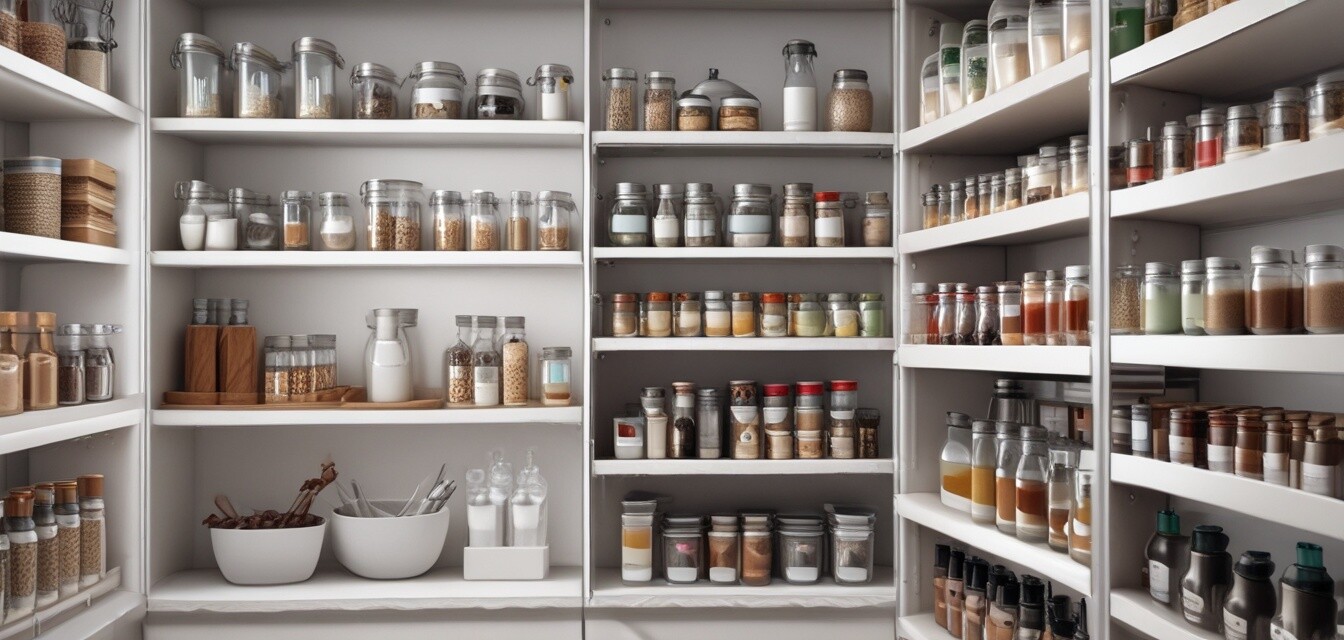
Smart Food Storage Solutions to Keep Your Pantry Organized
Key Takeaways
- Discover innovative storage solutions that maintain food freshness.
- Learn about smart technologies that provide organization and easy access.
- Explore how energy-efficient options contribute to sustainability.
- Find design trends that enhance the aesthetics of your kitchen.
- Stay informed about popular features in modern pantry systems.
In today's fast-paced world, keeping your pantry organized is vital not just for efficiency, but also for conserving food. Smart food storage solutions have revolutionized how we think about storing ingredients and meals, making it easier than ever to maintain an orderly space. This article will explore various innovative storage solutions designed to help you organize and preserve food effectively.
The rise of smart storage technology
Smart storage solutions utilize advanced technology for better organization, freshness, and accessibility of your food items. From Bluetooth-enabled containers that help manage inventory to intuitive labeling systems, these innovations streamline your kitchen routine.
Benefits of using smart storage solutions
- Efficiency: Easily find what you're looking for with organizational aids.
- Freshness: Many products monitor the conditions of storage to keep food fresher for longer.
- Reduction of waste: Helps you better manage food supplies, minimizing spoilage.
- Aesthetics: Modern designs mesh well with contemporary kitchen styles.
Types of smart food storage solutions
| Type | Description | Features |
|---|---|---|
| Smart containers | Containers that use sensors to track freshness and inventory. | Bluetooth connectivity, app integration, freshness alerts. |
| Labeling systems | Automated labeling solutions for easy identification of essentials. | Customizable labels, QR code scanning capabilities. |
| Food vacuum sealers | Devices that remove air to keep food fresh for longer. | Adaptable settings for different food types, long-lasting bags. |
| Smart bins | Intelligent bins that monitor the waste generated. | Compacting features, odor control, waste tracking. |
Integration with smart home systems
Smart storage solutions can seamlessly integrate with existing smart home systems, giving you control over your kitchen organization from your smartphone. Features like voice commands make accessing your pantry inventory easier than ever. Imagine being able to tell your device, “What do I need to buy?” and receiving an organized list based on what's missing from your pantry.
Popular trends in food storage solutions
- Minimalist designs: Focus on simplicity and elegance that fits any kitchen style.
- Modular systems: Flexible units that can be rearranged and adjusted to your needs.
- Ai-powered insights: Insights generated from usage patterns can help manage your pantry's inventory more intelligently.
- Sustainable materials: Eco-friendly options that are better for the environment.
How to choose the right storage solution
When looking for smart food storage solutions, consider the following criteria:
- Storage capacity
- Compatibility with other smart systems
- Ease of cleaning
- Cost and durability
Conclusion
Investing in smart food storage solutions can not only revolutionize how you organize your pantry but also greatly improve your cooking experience. With innovative technology at your fingertips, maintaining an organized space has never been easier. Explore more about smart faucet solutions or check our tips on buying the right kitchen gadgets to complement your storage systems.
Pros
- Improved organization for easy access
- Enhanced freshness of stored foods
- Reduction of food waste
- Energy-efficient options available
Cons
- Higher initial investment
- Dependency on power for functionality
- May require regular software updates